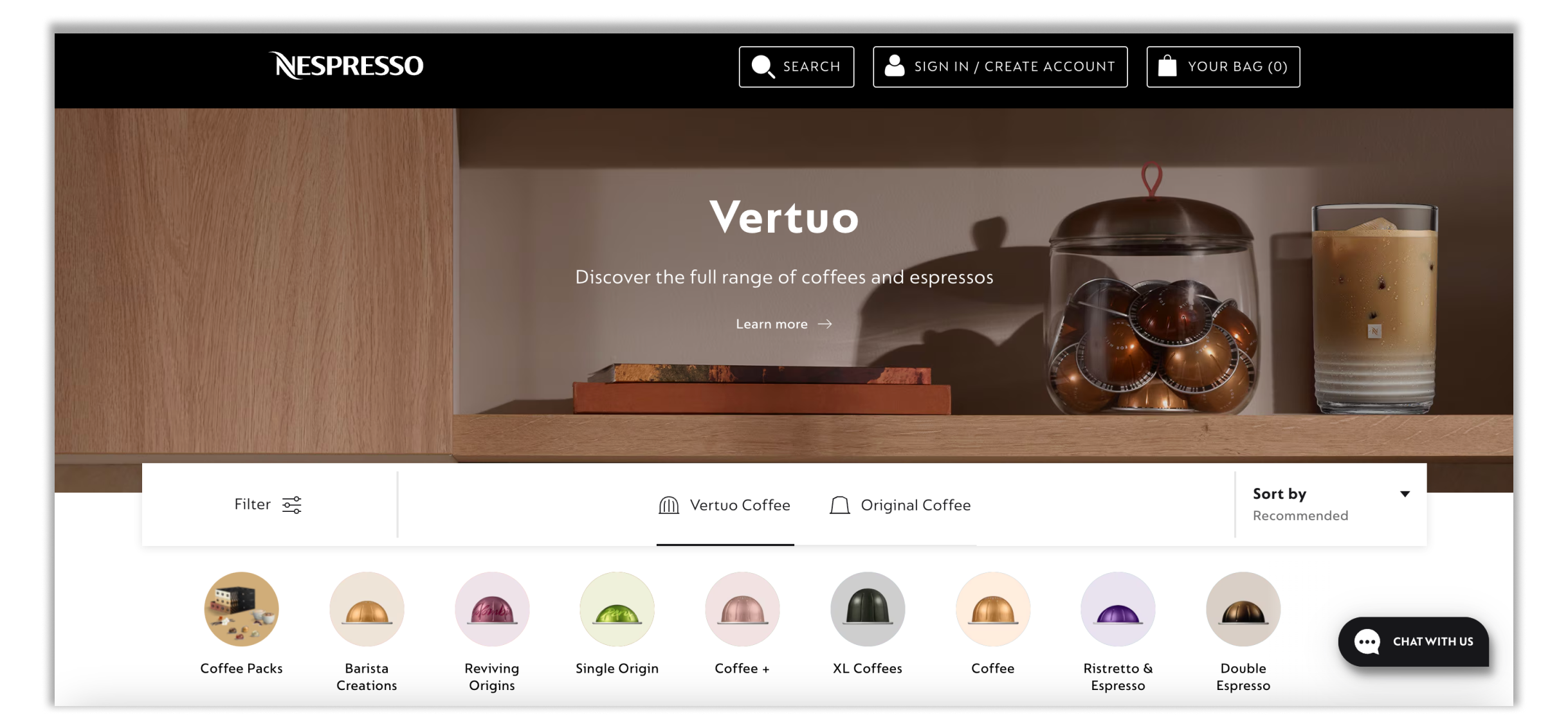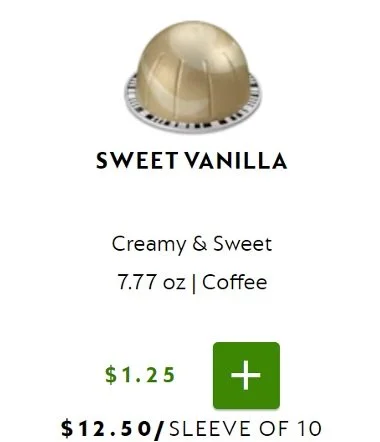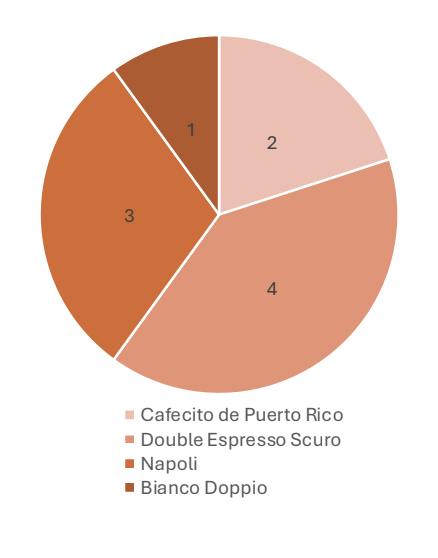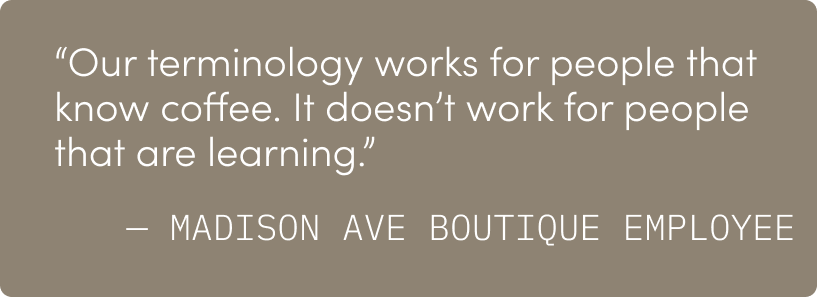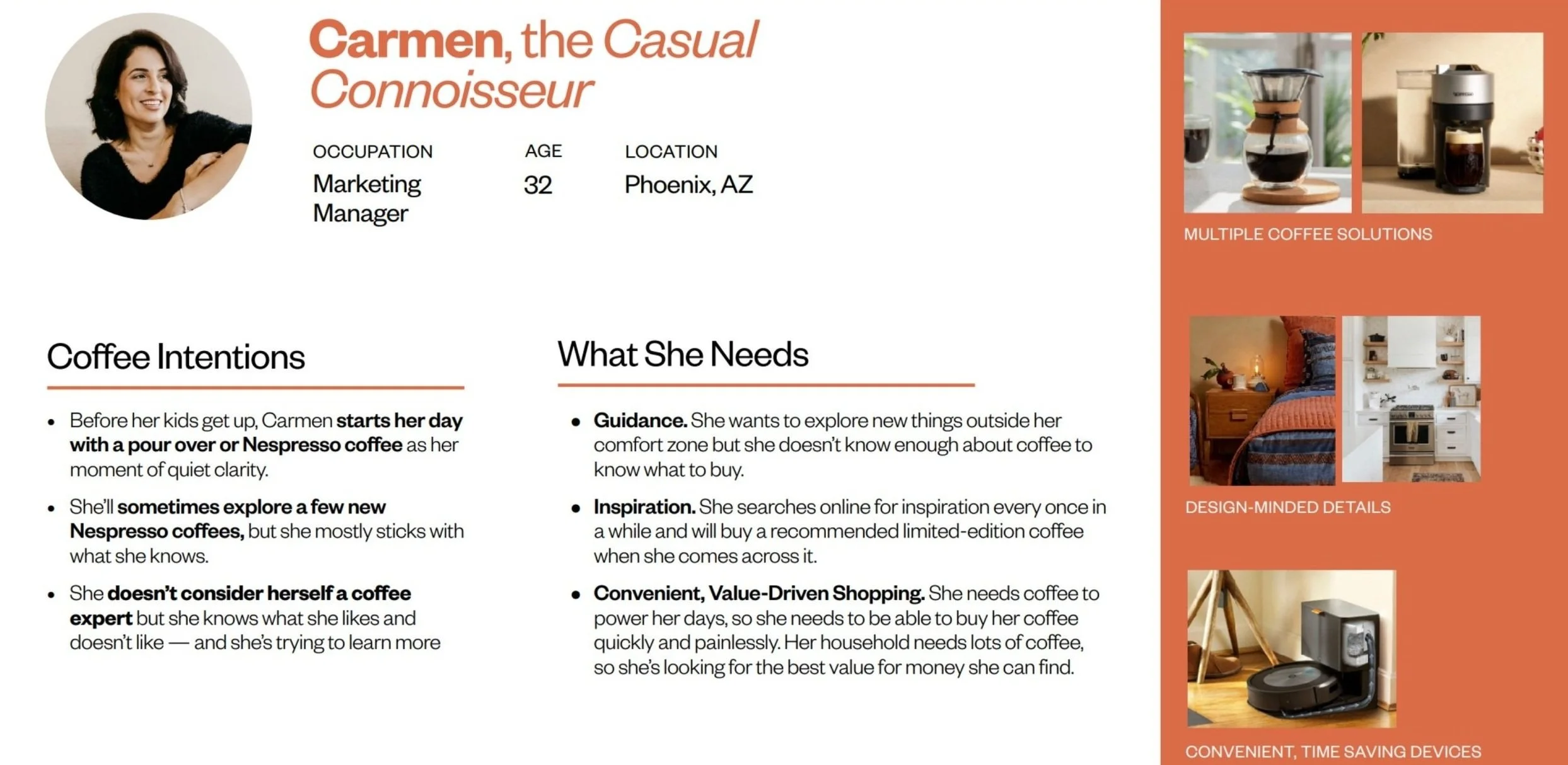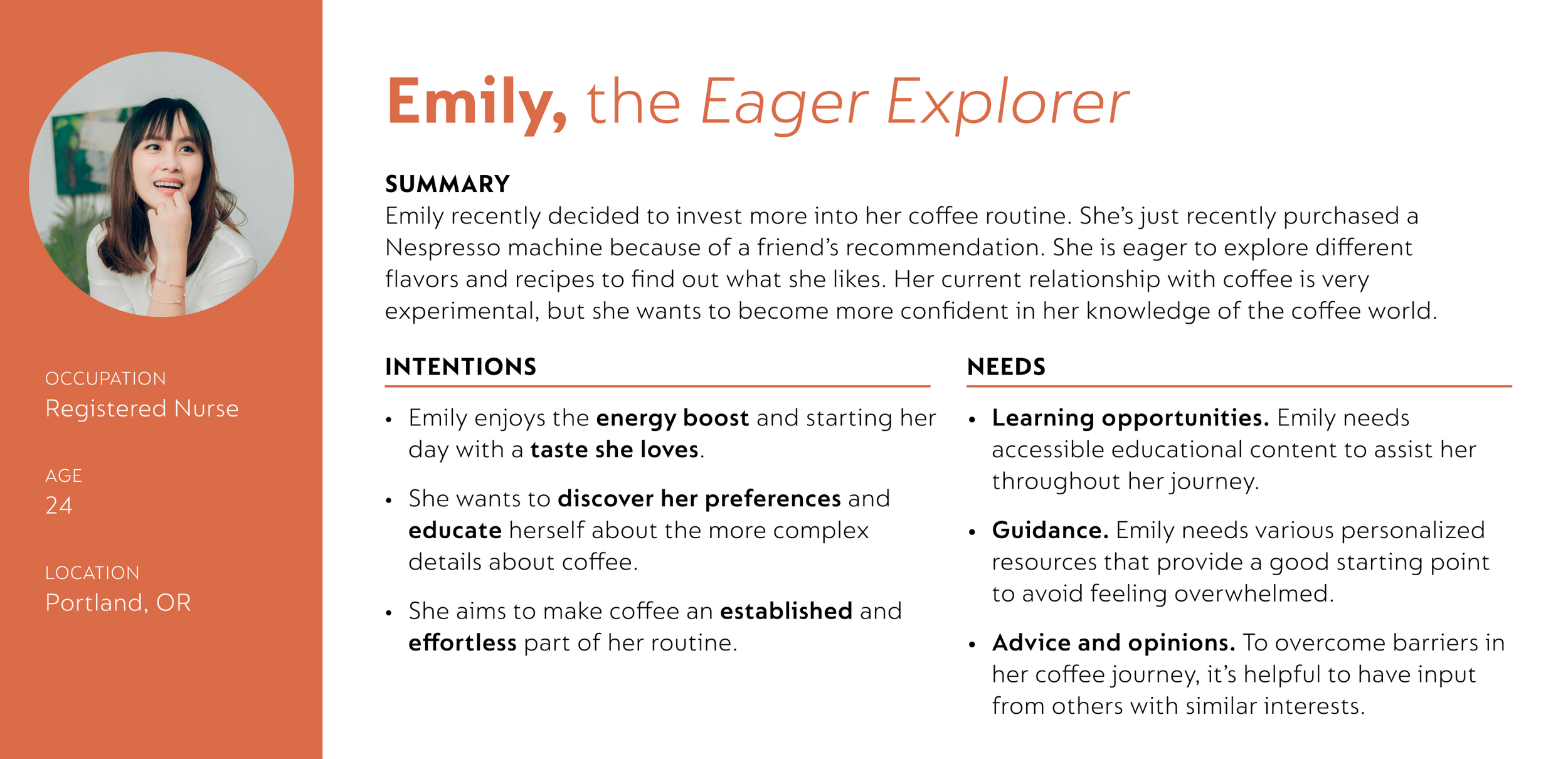UX Research for Nespresso
Nespresso is a global luxury coffee brand that offers a large variety of single-serve coffee capsules, machines, and coffee accessories. Entering my internship, the e-commerce team aimed to completely redesign and transform every part of the website.
The US market has not had any previous research done on customers. I focused my research on the coffee product listing page to guide new design decisions in future sprints of the transformation. My role provided foundational insights on existing Nespresso customers’ behaviors, motivations, and needs to be used by all of e-commerce.
Duration
Jun. 2024 - Aug. 2024 (10 weeks)Role
Sole UX ResearcherTools
UserTesting, Figma01
Context
The Problem
Nespresso’s e-commerce users struggle to efficiently find and understand what they need in a shopping session for coffee.
Guiding Questions
How do users currently perceive and understand our coffee products?
What factors are most important to users in their decision-making process, and what elements are less significant?
The Outcome
The insights that I derived explored various aspects of the problem and provided context for future research and design:
Although the website transformation process extended past the length of my internship, some design changes have already been made and validated:
The new iteration (right) features a more simplified size display based on research showing that numerical measurements are more effective than Nespresso’s size terms (ristretto, espresso, gran lungo, coffee, etc.)
The Process
Over the course of my internship, my work covered these key research goals:
Each research method that I executed followed this overarching structure:
02
Discovery
User Interviews & Initial Usability Test
How do users choose their coffee?This first interview and test was meant to learn about current users’ past experiences through open-ended questions and benchmark current website performance and efficiency to compare future iterations to.
I developed questions and tasks that addressed users’ interpretation of key product details listed to the right and how it aligned with Nespresso’s intentions as well as more general questions to get to know more about the users’ decision-making process and their relationship with the company to pinpoint patterns in various user types.
These are some of the questions and tasks asked in all of the user interviews:
Purchasing Behavior:
How do you choose your assortment of coffee?
What do you do if you are having a difficult time deciding which pod to buy?
Before clicking on the product to find more details, what information would you like to find?
Customer Understanding:
What size coffees do you usually brew?
Can you describe the best tasting coffee you’ve had? What was the taste profile of that coffee?
Tell me the price of Stormio.
Find the double espresso with the strongest flavor.
I observed the kind of terminology used in responses from both my own observation as well as UserTesting’s generated key word analysis, analyzed sentiment throughout different flows, patterns in purchasing behavior, logic throughout users’ explanations, and overall alignment with how Nespresso wants their customers to perceive and interact with their products.
Terminology used to describe coffee size
To make my insights more concrete and presentable, I considered quantitative data:
Variance in responses
Time on task (per user and average)
Search methods used in different tasks
Identifying these numerical patterns and differences indicated lack of alignment between Nespresso and its customer base. Through further analysis, I learned why this alignment issue existed.
Find the double espresso with the strongest flavor.
Boutique employees provide retail customers a unique service experience personalized to the customer’s knowledge and preferences. I wanted to learn more about our customers through the boutique staff because they get to directly interact and get to know many different kinds of customers each day. This information could then be used to align what makes Nespresso’s retail experience special with its e-commerce experience as well.
I visited two locations and spoke to an experienced employee at each. My takeaways largely covered what customers do and don’t understand about Nespresso products, validating many of the hypotheses that I’d developed through the first interview/test I’d conducted, as well as what lacks from the online experience and sales strategies that could be translated into a digital environment.
Field Research
Conversations with boutique staff about observations and patterns of in-person customersHow do customers typically describe what they’re looking for?
What sales strategies do you use to effectively encourage customers to buy coffee?
What kinds of questions do customers ask?
Do customers come in already knowing their own preferences in coffee?
Top Factors in Decision-Making (determined by mentions in interviews)
Typical orders consist of mostly regular, favorite flavors and users try new flavors in smaller quantities.
Discovery Insights
Main takeaways from all discovery research methodsCustomers value learning about coffee and Nespresso products from boutique staff. Preferences are often guided by their recommendations using suggestive selling.
Product details are valued greatly, but they are often misunderstood creating misconceptions about Nespresso’s coffee and dissatisfaction due to products not meeting customer expectations.
This is partially due to uncommon or brand-specific terminology that is not intuitive to users.
Education is largely reliant on experiences at the boutiques, and the website fails to align with the retail experience.
The current organization of the coffee product listing page is based on Nespresso collections, but the meaning of these collections are not intuitive to the users. This results in the page feeling too long since it’s not effectively providing any hierarchy to the overwhelming coffee product options.
03
Test
Usability Testing
Evaluating the impact and user-friendliness of a prototype of the new coffee product listing page iteration & solidifying user typesUsers were provided with tasks to complete on a working test page of a new iteration of the coffee product listing page prior to its launch.
I observed success rates, identified pain points, and analyzed patterns in results based on user domain knowledge.
Aimed to simulate common goals of a shopping session:
Look for a new coffee that you think you would purchase and enjoy. Find out if the coffee you chose is compatible with the VertuoPlus machine.
Find all the decaffeinated coffees.
Find one coffee that you are meant to brew with milk.
A/B Testing
Simultaneously collecting data on the launch of two versions to understand progress towards goalsNearing the end of my internship, an A/B test between the original version of the coffee product listing page and the new iteration was launched where half of the users visiting the site saw one version and the other half saw another. The test continued after my internship ended and is now awaiting results.
Misconceptions about product details that I discovered in my earlier research sparked the start of another A/B test in the product details for roast vs. intensity and which concept was more understandable and valuable to Nespresso consumers in the US market.
Testing Insights
Main takeaways from testing stage of research processSuccess rate of finding a particular size coffee fell from 100% to 70% when numerical measurements weren’t present
Success rate of finding coffees meant for ice and meant for milk was <50%
Only 60% of tested users were able to identify size compatibility of a coffee capsule with a specific machine
The greater domain knowledge proved an overall easier experience navigating the coffee product listing page. We see a significant difference when customers are provided the educational opportunities available at boutiques.
If the information available online and the website design supported users’ comprehensive understanding of Nespresso products, more users would be able to successfully complete their shopping goals and conversion rate could increase up to 15%.
04
Explore
User Personas
Creating profiles representing various users observed across all research to inform design decisionsCarmen was the only existing persona that designs were based off of prior to my research. Although she does accurately represent some users, she does not address the needs of other types of users. Coffee is personal, so it’s crucial to consider every part of one’s coffee journey when designing.
I designed Emily to address users that are new to coffee and Nespresso. She’s still exploring to find what she likes, and she needs external guidance to help her understand the nuances of coffee to smoothly make progress in her coffee journey.
Dylan is on the opposite end of the spectrum. Dylan was developed to address users that have been long-term coffee drinkers and Nespresso customers.
He’s been through the exploration phase and simply values efficiency and finding coffees that fit exactly what he likes.
To put these personas in context and further validate my insights, I went back to the usability test, assigned users to the three personas, and assessed their results:
From the disparities in results, we can see the benefit of the boutique experience to the user’s overall experience with Nespresso even online, further validating the need to educate Nespresso customers outside of boutiques too.
05
Next Steps & Reflection
Adjust future iterations to consider findings and personas
Validate design changes with further testing
Explore other forms of research (journey mapping, card sorting, surveys, etc.)
Next Steps
What should Nespresso do with this research moving forward?Reflection
Development of Analytical and General Research SkillsMy experience with UX research prior to this internship was limited to one or two weeks of research as part of a shorter case study. This internship provided me experience with the in depth processes that go into different research methods and applications in the context of a much larger, more realistic website transformation. My insights were also not only being used by designers but by multiple functions within the sales/e-commerce team, so I learned to reframe and contextualize my work to be understood and valued by a broader audience.
Independence and Work StyleNespresso had only recently invested in user experience for their digital platforms, so my role as a UX Researcher was completely new for the US market. There was no precedent to work off of, so the processes and insights that I developed were done on my own from scratch. I received some guidance from Nespresso’s UX Researcher in Spain, so I combined what I learned from him, what I knew about UX research from prior experience, and my personal research to navigate how to plan, structure, and execute my approach.

